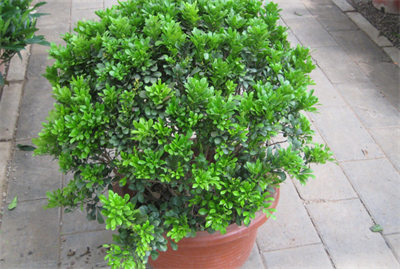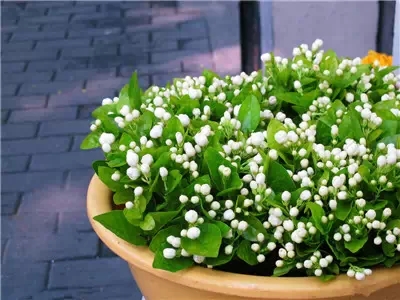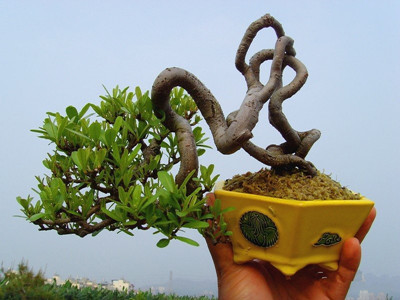Reasonable indoor flower cultivation to promote health in summer
On a hot summer day, although the indoor air conditioner can cool down, it closes the doors and windows and blocks the air circulation. Therefore, raising flowers with "complementary functions" in the room can act as an "air filter".
Most flowers carry out photosynthesis during the day, absorb carbon oxide, release oxygen, respiration at night, absorb oxygen, release carbon oxide, while cactus, tile pine and other types are just the opposite.
The "complementary functions" of flowers in the same room can balance the content of indoor oxygen and carbon oxide, and keep the indoor air fresh.
According to reports, daffodils, purple jasmine, chrysanthemum, cockscomb, can convert nitrogen oxides into protein, thus relieving toxicity.

Hanging orchid, aloe, tiger tail orchid can absorb a large number of indoor formaldehyde and other pollutants, eliminate and prevent indoor air pollution. In particular, hanging orchid, put a basin in the room, within 24 hours, its leaves will be indoor air-carbon oxide and other harmful gases "eat", its effect is even better than the air filter.
Milan, orchids, cloves, cactus, Tianzhu and so on can effectively purify the air. Camellia can resist the damage of harmful substances such as sulfur oxide and so on. Crape myrtle has strong resistance to indoor sulfur oxide hydrogen chloride chlorine hydrogen fluoride and other toxic gases.
Plum can monitor the pollution of sulfur oxide, hydrogen fluoride, hydrogen sulfide, ethylene, benzene and aldehydes in the environment. When sulfides appear in the environment, markings will appear on its leaves, or even withered and yellow.
It should be pointed out that these functions of plants have a certain limit, and their functions are enhanced with the increase of the number of plants planted, and it is impossible to be satisfied entirely by indoor plants. Therefore, it is also necessary to open windows frequently to make the air convection.
In addition, experts also specifically remind: do not use the room as a "greenhouse" in summer. If there are too many flower plants and limited indoor ventilation, the air will be as thin as in the plateau, especially at night, most flowers will release oxygenated carbon, absorb oxygen, and "compete" with people. Moreover, the rooms are mostly closed at night, and the carbon oxide in the soil, human body and pet breathing in the flowerpot will increase the concentration of oxidized carbon. It causes hypoxia in the human body and affects health, but has the opposite result.
Reasonable indoor flower cultivation to promote health in summer
Functional complementary flowers
Most flowers carry out photosynthesis during the day, absorb carbon dioxide, release oxygen, breathe at night, absorb oxygen and release carbon dioxide, while cactus, tile pine and other types are just the opposite.
Keeping flowers with complementary functions in the same room can not only balance the content of oxygen and carbon dioxide in the room, but also keep the indoor air fresh.
According to reports, daffodils, purple jasmine, chrysanthemum, cockscomb, can convert nitrogen oxides into protein, thus relieving toxicity.
Plants that absorb harmful gases
Hanging orchid, aloe, tiger tail orchid can absorb a large number of indoor formaldehyde and other pollutants, eliminate and prevent indoor air pollution. Especially hanging orchid, put a pot in the room, within 24 hours, its leaves will "eat" harmful gases such as carbon monoxide in the indoor air, and its effect is even better than the air filter.
Milan, orchids, cloves, cactus, Tianzhu and so on can effectively purify the air. Camellia can resist the damage of harmful substances such as sulfur dioxide, and crape myrtle has strong resistance to indoor sulfur dioxide, hydrogen chloride, chlorine, hydrogen fluoride and other toxic gases.
Plum has the ability to monitor the pollution of sulfur dioxide, hydrogen fluoride, hydrogen sulfide, ethylene, benzene and aldehydes in the environment. Once sulfides appear in the environment, markings will appear on its leaves, even withered and yellow.
It should be pointed out that these functions of plants are limited, and their functions are enhanced with the increase of the number of plants, and it is impossible to be satisfied entirely by indoor plants. Therefore, it is also necessary to open windows frequently to make the air convection.
Don't put too many plants in the room.
In addition, experts also specially remind: do not treat the room as a "greenhouse" in summer. If there are too many flowers and trees, and the indoor ventilation is limited, the air will be as thin as in the plateau, especially at night, most flowers will release carbon dioxide, absorb oxygen, "compete" with people, and the rooms are mostly closed at night, coupled with the carbon dioxide breathed by the soil, human body and pets in the flowerpot, which will increase the concentration of carbon dioxide. It causes hypoxia in the human body and affects health, but has the opposite result.
Do you know all this knowledge of growing flowers at home?
What do you need to pay attention to when growing flowers in your family?
① does not raise plants that are harmful to human health. Cloves and nocturnal incense can emit olfactory-stimulating particles at night, which have adverse effects on patients with high blood pressure and heart disease; oleander flowers can make people lethargic and intelligence reduced; particles emitted by hydrangea can cause skin allergies and itching; tulip flowers are poisonous alkaloids, and too much contact with people's hair is easy to lose hair; the oil fragrance emitted by pine and cypress flowers can affect people's appetite.
② does not raise "Xiangke" flowers. When roses and rhinoceros rise, rhinoceros will wither, but rhinoceros will release a substance to poison the roses before withering. Grass flowers such as Yu Mei, orchids, carnation, violets and lilies are difficult to get along with other flowers.
③ patients do not grow flowers in the room. The fungal spores produced by the soil in the flowerpot will spread into the indoor air, causing surface or internal infection, and may also invade the skin, respiratory tract, external auditory canal, meninges and brain. This is even worse for patients who are already suffering from diseases and poor physique, especially for patients with leukemia and organ transplants.
How to choose plant species reasonably?
Choose plant species according to room size, lighting conditions and personal preferences, there are primary and secondary. To fully consider the weak indoor natural light conditions, choose more shade-tolerant species, such as colored red iron tree, wrinkled pepper grass, flower and leaf everspring vine, synthetic taro, as well as green apple,-leaf orchid, tortoise back bamboo, evergreen, brown bamboo, asparagus, loose-tailed bamboo, begonia, orchid, rubber tree, gentleman orchid, Dutch iron, Brazilian jelly and so on.
Third, how to pay attention to the color of green plants?
The colors should be harmonious. The choice of leaf color should be in harmony with the color of walls and furniture. Such as green or brown walls do not adorn dark green plants, otherwise gloomy. In addition, the bedroom with different functions should also be different in the choice of leaf color, the study should create a sense of serenity, mainly with white, yellow (or markings), light pink, etc., while the bedroom should increase the sense of lightness, and the leaf color light green is the best.
Fourth, how to choose green plants according to the season?
Generally speaking, flowers should be viewed mainly in spring, foliage in summer, plain and cool flowers such as asparagus, colored leaf taro, cold spray, autumn chrysanthemum and coral beans can be configured in autumn, and magenta, camellia, daffodils and plum blossoms can be used in winter.
- Prev

Maintenance methods of jasmine in winter
Winter is coming in the twinkling of an eye, flower friends who like to raise jasmine begin to discuss the maintenance methods of jasmine in winter. The following editor briefly introduces the maintenance methods of jasmine in winter. 1. Jasmine flowers are dormant as long as they stop growing in winter, regardless of whether the leaves are deciduous or not.
- Next

Maintenance methods of Pyracantha
Hippophae rhamnoides is a common evergreen bonsai plant of the four seasons, with luxuriant branches and leaves, flowers and leaves, but also fruit, which is favored by the majority of bonsai lovers. The maintenance of Pyracantha has also become an issue of great concern. Next, the editor will show you the maintenance methods of Pyracantha.
Related
- Fuxing push coffee new agricultural production and marketing class: lack of small-scale processing plants
- Jujube rice field leisure farm deep ploughing Yilan for five years to create a space for organic food and play
- Nongyu Farm-A trial of organic papaya for brave women with advanced technology
- Four points for attention in the prevention and control of diseases and insect pests of edible fungi
- How to add nutrient solution to Edible Fungi
- Is there any good way to control edible fungus mites?
- Open Inoculation Technology of Edible Fungi
- Is there any clever way to use fertilizer for edible fungus in winter?
- What agents are used to kill the pathogens of edible fungi in the mushroom shed?
- Rapid drying of Edible Fungi

